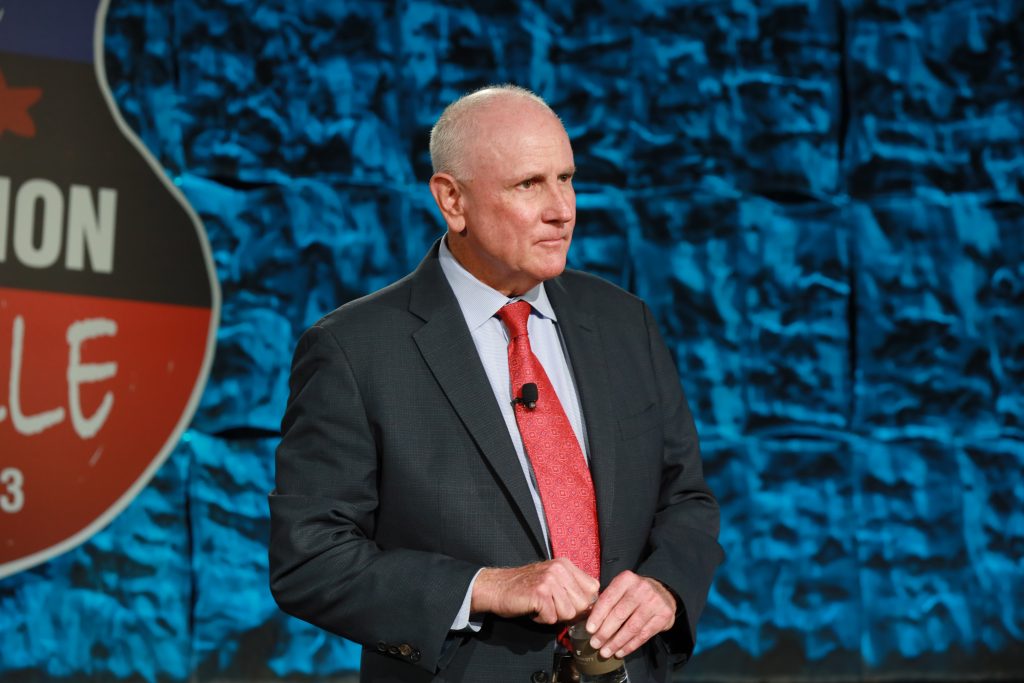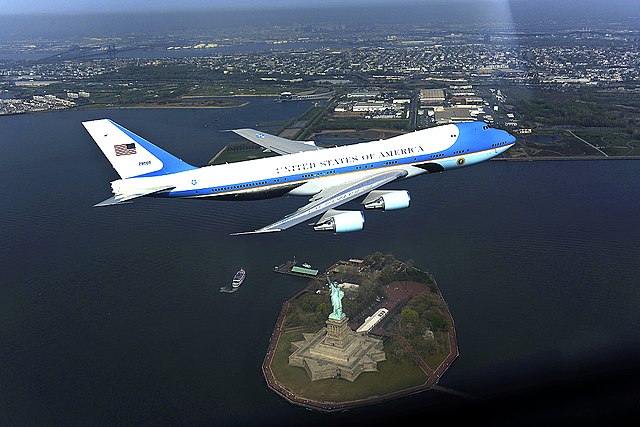The third and final day of CJP 2023 kicked off with a stirring and insightful presentation by Col. (Ret.) Mark Tillman (USAF), who served as co-pilot on the VC-25A – the heavily-modified Boeing 747-200 more commonly known as Air Force One – over the terms of President George H.W. Bush and President Bill Clinton, and as pilot and commander for eight years for President George W. Bush.

“Our job was simply to safely transport the President of the United States at any location in the world,” Tillman said. “We had to do that with zero failures, and we couldn’t do anything to take away from the President’s message.”
That success was driven by “an incredible culture and intense training,” he continued. “We also had a risk management program that you’d never believe. Every move we made, a group of three of us would always do the risk management.”
Adherence to standard operating procedures (SOPs) was also critical, although sometimes those SOPs needed to be modified on the fly. “The waiver authority for me wasn’t the U.S. Air Force, but actually the commander in chief,” Tillman said. “It was great to have that capability.”
As one example, Tillman displayed the famous photo of Air Force One flying over the Statue of Liberty, taken shortly after President Barack Obama’s inauguration in 2009. “How low do you think we are?” he asked attendees. “We’re at 500 feet. Our plan was to fly at 1,000 feet, but I’m a strong believer that if you get a great picture 1,000, you’ll get an incredible picture at 500′.”

Tillman is perhaps best known for being at the controls of Air Force One throughout the events of 9/11. However, his proudest moments were safely flying President Bush into and out of numerous challenging locations, including the first time a Commander-in-Chief flew into an active war zone.
That Thanksgiving 2003 trip to Baghdad required an unprecedented amount of preparation and planning. “The plan is we leave the United States we go fly up and go to Baghdad, meet the troops to the chow hall, we turn around and go back,” Tillman recounted. “My job is to figure out exactly how to get them there.”
That included careful examination of early satellite imagery to determine the areas where enemy RPG fire couldn’t hit, refueling in a country “really close” to Iraq (“I can’t say [its name] because we never got permission to do it, we just dropped in there”) and engaging in high-level subterfuge resembling something out of a spy novel.
“I’m told to call this guy ‘Jim’ on a Saturday,” Tillman said. “I go to my office I dial it up expecting Jim to answer [but] a lady answers the phone. ‘Hello, this is Colonel Tillman, I’m looking for Jim.’ ‘Okay, Jim’s out on the lawn, can you give me like maybe 2-3 minutes?’ ‘Yeah, absolutely.’
“So, I’m waiting, and then this guy answers the phone. ‘Colonel, Ghost’s secure!’ So, it’s like now we’re talking,” he continued. “So I go, ‘who are you? Is this Jim?’ ‘Nobody’s that stupid, Colonel.’ ‘Okay, I apologize.’”
Despite some challenging situations, flying Air Force One ultimately came back to following proper procedures. “Checklist discipline is required in everything we do,” Tillman said. “I didn’t want to be the guy who taxied Air Force One to the FBO with the flaps and speed brakes hanging out, because I’d have to buy the drinks afterward.”